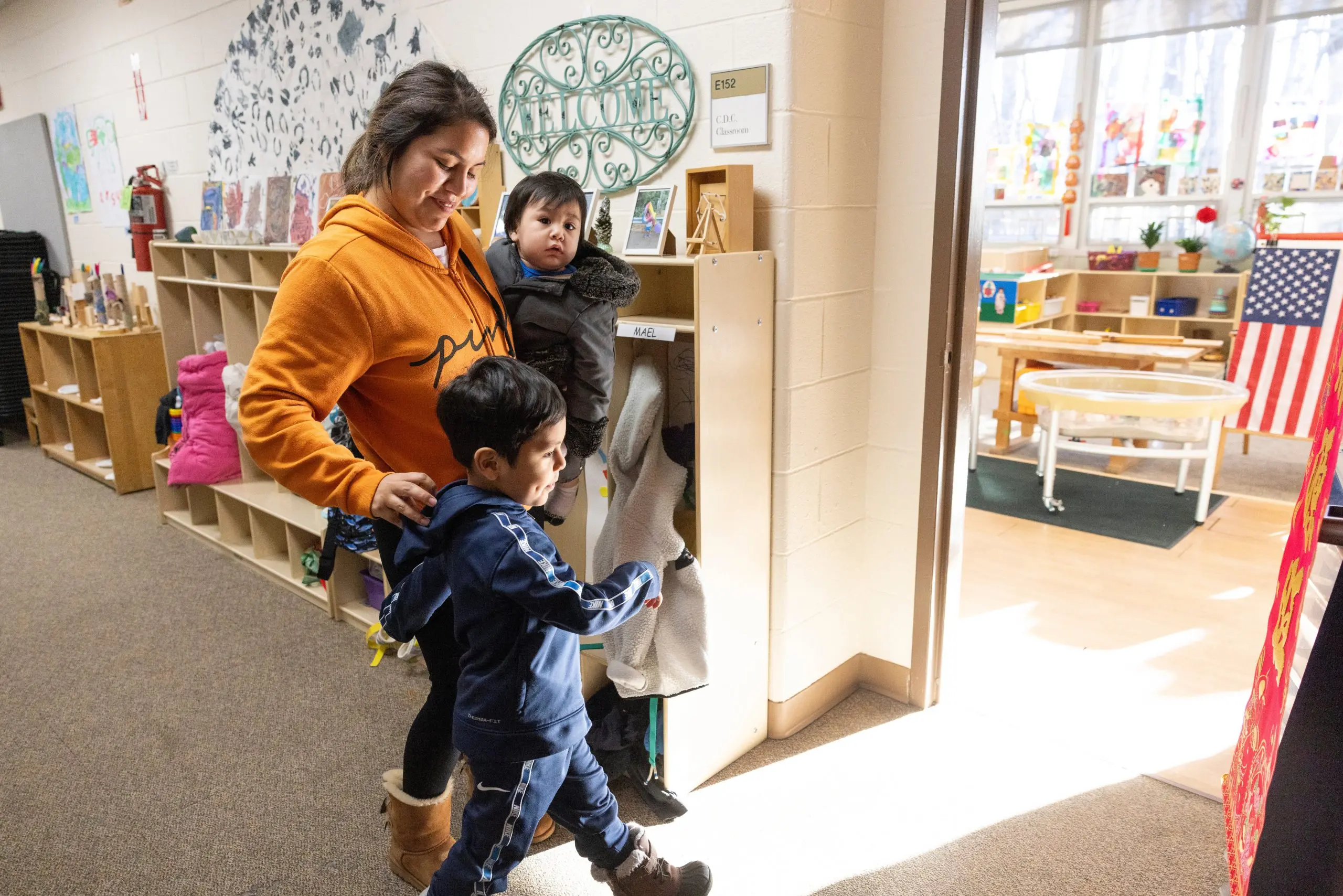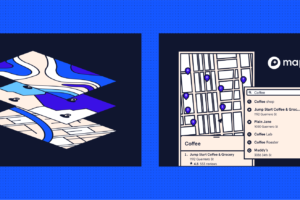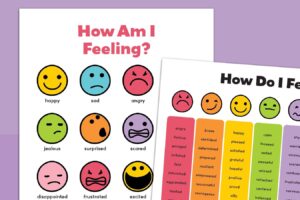
Education R&D Rooted in Community Need: A Conversation with Trenace Dorsey-Hollins
By: Margo Roen and Trenace Dorsey-Hollins
While at the Stanford d.school with Imagine Network‘s cohort of school district leaders, I saw a poster that read “Good design is for (and by) everyone.” Across the country, there are bright spots in local innovation. Parents, community, educators, and students are taking the lead on designing solutions to meet their needs, and school systems are learning ways to co-design solutions together in place of top-down solutions.
For example, The Oakland REACH wanted to make quality tutoring accessible to all families. Through R&D, they created the REACH Certified Virtual Tutoring and Family Success Coaching Pilot, a tech-enabled solution that certifies the best high-impact virtual tutoring providers and connects them directly to lower-income families nationwide. In the youth R&D space, In Tandem is working with organizations to embed student voice throughout the full design cycle – from early concepting to usability testing to refining live products. That looks like everything from redesigning app flows based on teen feedback to re-framing national survey questions and even rethinking how AI tools show up in youth mental health spaces.
These examples, as well as the example in this recent interview shared below, highlight powerful ways parents and students are leading local R&D efforts to improve educational opportunities and outcomes. So, what do they want the co-creation of new ideas to look like in their school district? What does community-led education R&D look like and why is it important? To answer these questions, I sat down with Trenace Dorsey-Hollins, a powerful parent advocate and founder of Parent Shield Fort Worth (PSFW).
This conversation has been edited for clarity and length.
Margo: Tell us about Parent Shield Fort Worth–who you are, who you serve, and what you aim to solve.
Trenace: I started the organization–being a fifth-generation Fort Worthian and someone that’s always cared about kids and my city–after seeing the disparity between grades and state test scores. Here in Fort Worth, 64% of our kids are unable to read on grade level. I made it my mission to start off helping one parent help their child read, and that turned into thousands of parents. That’s how and why Parent Shield Fort Worth exists–parents do care, they just need to be informed. PSFW is a nonprofit organization and a grassroots movement for parents to educate themselves so that we can demand better education for our kids together. We want a high quality education for not only our kids, but all kids in Fort Worth.
Margo: You have created powerful coalitions and supporters–from the mayor, to the school board and district leaders, to thousands of parents in the Fort Worth community–of your organization’s work to address the child literacy crisis in your community. Why was creating your own solution to the reading crisis in Fort Worth important to you?
Trenace: We knew that we couldn’t wait to fix the literacy crisis. So, we created our own solution to address the crisis and brought together teachers, parents, and students in our own way to understand the challenge and find a solution.
Margo: What was your process to develop a community-and-parent driven solution?
Trenace: We started off knocking on doors, asking parents if they knew we are in a literacy crisis in our city. Parents didn’t know. We decided to have little community pockets in our city as safe spaces for parents. We hired our own teachers and set parents up with different times of the day all throughout the city, so that it could be convenient for parents to come learn about their child’s reading. People feel like when we [parents] don’t show up, we’re not concerned. But we work, too, so we had to make it as convenient as possible for parents.
Parents brought their kids into those community clinics to be assessed, and we surveyed the parents to find out more about the problem to solve. And what we found is that 75% of the parents thought that their kids were on grade level while only 36% of kids assessed were. We learned that teachers were not having honest conversations with parents. We knew that parents weren’t getting STAAR results or other assessment data, and that they were dependent solely on report cards to tell them how their kids were doing. So from all our data collection, we were able to better understand the problem, the disconnect. We knew that kids weren’t reading, and then did research to determine what interventions worked.
We found that if kids were able to get high dosage intervention, that it closed gaps. We decided to start our own intervention program, which was Literacy Is Freedom Texas, or LIFT, and we provided direct intervention with quality, high dosage tutoring. We designed and piloted a model where kids had tutoring with the same teacher, at the same time of the day, two to three times a week. We followed children and assessed them at the beginning and end of the program. We thought about, “What do we need to tweak before the end of the program?” and made sure we knew what was working for kids.
The end result of our 3-month pilot: we were able to grow 97% of our kids at least one grade level. Now we are partnered with the Boys and Girls Club to continue this program. We are meeting a current need–directly addressing the literacy crisis in my city–and gathering information to report back to the district to say “these are the things that we know are working” as advocates for all children in Fort Worth.
Margo: How do you define innovation or Ed R&D?
Trenace: To me, innovation is being able to pinpoint a problem, do some rigorous research, and then galvanize a crowd of people that support the same mission as you, so that you can actually work together to understand the problem and develop a solution together. You’re creating something new, something that will last and sustain with others.
Something that resonates with me from ALI’s definition of Ed R&D is it’s about dealing with real issues, getting down to the root of the communities and finding out what are the issues that the real community is facing. And then, not only developing but also testing ideas and evaluating them so we can know what is working and why and build on that.
Margo: I lead an organization, Imagine Network, that brings together school systems leaders to learn inclusive innovation practices. What do you wish parent co-creation looked like in your school district? What would make that type of collaboration feel valuable and purposeful to you?
Trenace: You need to have good relationships between parents and the school district with honest communication. I’m a parent, and I don’t have a background in education systems. I have a background in my student. So being able to have that open collaboration, providing feedback and suggestions, makes co-creation truly a team effort.
It starts with trust. So I have to be able to trust that you’re going to do what you’re going to say, you’ll be able to trust that I’m going to do the same thing. And then we’re in it for the right reason, which is the kids. We’re leaving all of the politics and the adult thinking aside, and we’re really putting on our kid-centric hats. So we have to trust that the people we’re partnering with respect what we bring to the table and will build trust through transparency and through valuing our ideas.
Margo Roen is Co-Founder and CEO of Imagine Network, an organization dedicated to building capacity at the state and local levels to spur innovation and create learning opportunities needed now and into the future.
Trenace Dorsey-Hollins is the Founding Executive Director of Parent Shield Fort Worth, a grassroots movement working to educate and unite powerful parents to demand a high quality education for all children.
This blog was originally posted on the Alliance For Learning Innovation website. Find that version here:
Source link



